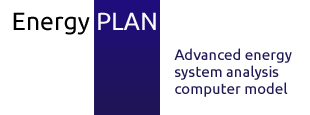EMPS (EFI’s Multi-Area Powermarket Simulator) has been developed and continually refined since 1975 by SINTEF (Stiftelsen for industriell og teknisk forskning) Energy Research (previously EFI) in Norway [1]. EMPS is a computer tool for the optimization and simulation of the operation of power systems with a certain share of hydro power. Over ten versions of the software have been created, and more than 30 users have bought it. It costs NOK 500,000 (€57,620) to purchase and it takes one month of training to use the model.
The EMPS model simulates the electricity sector only, although parallel gas and CO2 grids have been modelled experimentally. In the model, transmission constraints and hydrological differences between major areas or regional subsystems are taken into account. The model aims at optimal use of hydro resources and thermal generation, in relation to uncertain inflows, power demand, thermal generation availability and spot type transactions between areas. Wind power and pumped-hydro energy-storage are also considered in the model. The EMPS-model consists of two parts. Firstly, a strategy evaluation part computes regional decision tables in the form of expected incremental water values for each of a defined number of aggregate regional subsystems. Secondly, a simulation part evaluates optimal operational decision for a sequence of hydrological years. Weekly hydro and thermal-based generation is in principle determined via a market clearance process based on the incremental water value tables calculated for each aggregate regional subsystem. Each region’s aggregate hydro production for each time step is distributed among available plants using a rule-based reservoir drawdown model containing a detailed description of each region’s hydro system. The time resolution in the model is 1 week, with a duration curve to model variations in demand within the week (e.g. ‘peak load’, ’off-peak day’, ’night’, ’weekends’) and the analysis can be carried out for up to a 25-year period. The model results comprise of detailed generation plans, fuel costs, consumption, rationing, exchange between areas, marginal costs (spot prices), marginal values of increased interconnection capacities and others. All results can be obtained for single scenarios, as percentiles or as average values for all scenarios.
Previous case studies undertaken using the EMPS model include analysis of increased transmission capacity between the Nordic power market and continental Europe [2], planning for new hydro power production [3], price-forecasting by simulating the operation of the entire power system and electricity market [4, 5] and identifying vulnerabilities in the NORDIC power system [6]. An extended model which includes a detailed load flow algorithm has also been used to simulate the effects of CO2 quotas e.g. on transmission grid expansion [7].
References
- EOPS and EMPS, SINTEF, 23rd April 2009, http://www.sintef.no/Home/Petroleum-and-Energy/SINTEF-Energy-Research/Software/EOPS-and-EMPS/
- Warland, G., Haugstad, A. & Huse, E. S., Including Thermal Unit Start-up Costs in a Long-Term Hydro-Thermal Scheduling Model, Proc. of the 16th Power Systems Computation Conference, Glasgow, Scotland, 14-18 July.
- Sedaghati, A., Evaluating the Consequences of Investment in Distributed Power Production, Proc. of the 2005 IEEE International Symposium on Intelligent Control & 13th Mediterranean Conference on Control and Automation, pp. 1074-1078, Limassol, Cyprus, 27-29 June.
- Fosso, O. B., Gjelsvik, A., Haugstad, A., Mo, B. & Wangensteen, I., Generation scheduling in a deregulated system. The Norwegian case. IEEE Transactions on Power Systems, 14(1), pp. 75-81, 1999.
- Haugstad, A. & Rismark, O., Price Forecasting in an Open Electricity Market based on System Simulation, Proc. of the EPSOM ’98 – International Conference on Electrical Power Systems Operation and Management, Zürich, Switzerland, 23-25 September.
- Doorman, G., Kjølle, G., Uhlen, K., Ståle, E. & Flatabø, N. Vulnerability of the Nordic Power System: Main Report. SINTEF, Nordic Council of Ministers, 2004, http://www.hks.harvard.edu/hepg/Papers/Doorman.vul.nordic.system.0504.pdf
- Homnes, K., Haugstad, A. & Faanes, H. H., Benefit of transmission grid expansions in a market-based power system with CO2-quotas, Proc. of the CIGRE 2000, Paris, France, 27 August – 1 September.



